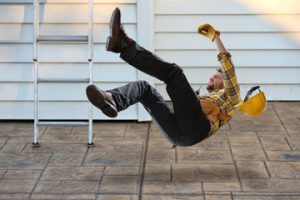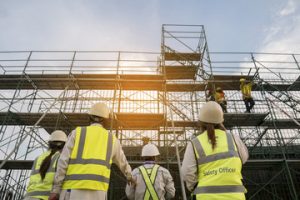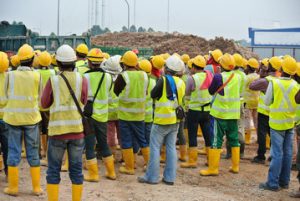Falls are a frequent cause of serious injury or death in the workplace. Are you being safe?
Working at great heights is obviously hazardous, but death can occur from a fall of less than 1.8 metres. Even falling from ground level into a shallow hole, trench or service pit represents a serious hazard.
There are numerous ways to fall from heights in the workplace. Ladders, scaffolds, rooftops can all seem like a safe place to stand and work but all three can be equally dangerous. An unstable ladder, poorly constructed scaffolding unit or slippery roof can increase the risk of falling. Are you taking the correct safety measures for fall prevention?
 Is the Equipment Safe?
Is the Equipment Safe?
Workers use a variety of equipment when working in high places. You always need to consider whether or not your equipment is safe. Are ladders in use and if so are the ladder steps in good shape with non-slip treads? What about scaffolding? Is it built properly and able to hold the necessary weight of workers and equipment?
Lifts, platforms and safety harnesses are regularly used equipment in the workplace. Lifts should be in good working order and inspected regularly. Platforms are similar to scaffolding but may or may not have rails. Like scaffolding, platforms should be well constructed and able to bear the weight. Safety harnesses are needed for working on steep rooftops or any construction above 1.8 metres . The clips and lines should be in good working order with no frays or shredded areas.
 Falling Items
Falling Items
Another workplace consideration is items falling from above. A hammer, paint bucket, any tool dropped from above or any construction products will seriously injure or kill if it hits somebody’s head below. Hard hats go a long way in decreasing workplace injury in this manner but will only work while being worn on the head. Hard hats don’t help if they’re lying in the back of a car or on the ground next to you. However not just any hard hat will do, only Certified Hard Hats that have been independently tested and guaranteed to provide the level of protection required, should be used.
Regulations and Training
It’s not enough to simply check ladders and scaffolds and hope for the best. Many workplace incidents resulting in injury or death could have been prevented by fully understanding safety procedures & regulations, and adhering to them. Good site managers implement training sessions with regular reminders and inspections. Assigning new people to experienced trainers is a good practice. Well trained workers make safer workers long term.
 Taking Safety Seriously
Taking Safety Seriously
Business owners, directors, managers and employees should come together in solid agreement regarding safety. It may add expense to implement certain safety measures but in the long run, safety pays off with less injuries in your workplace, less downtime and loss of productivity and less damage to your companies brand and public image. Working together to keep the workplace productive as well as safe is a win-win for everyone.